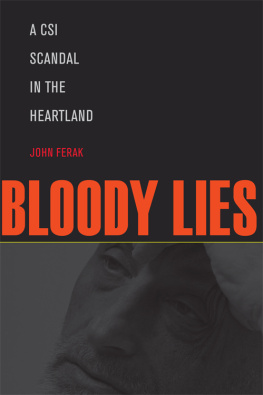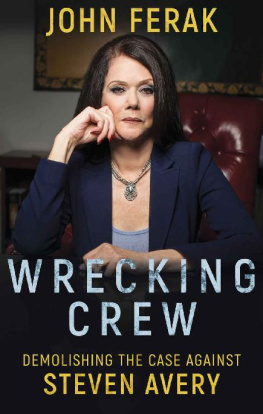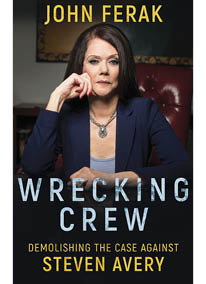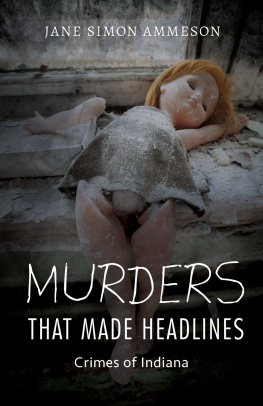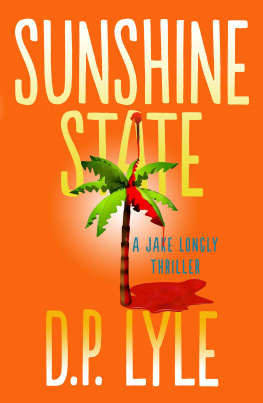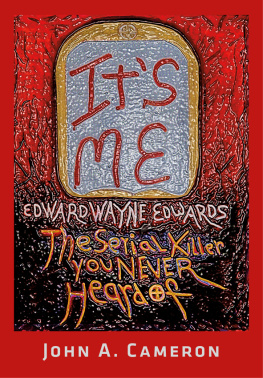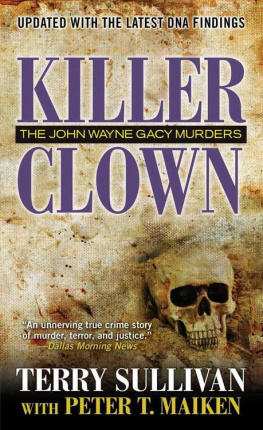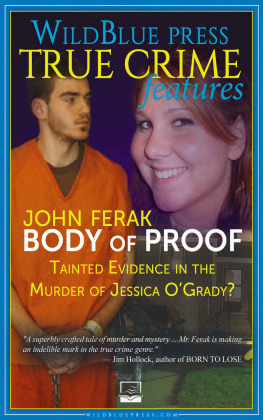Frisky, industrious black squirrels are a familiar sight on the Kent State University campus and the inspiration for Black Squirrel Books, a trade imprint of The Kent State University Press www.KentStateUniversityPress.com
Every effort has been made to obtain permission from persons interviewed by the author who are quoted in this book.
Bloody lies : a CSI scandal in the heartland / John Ferak.
Includes bibliographical references and index.
1. MurderNebraskaCase studies. 2. Criminal investigationNebraskaCase studies. 3. Evidence fabricationNebraskaCase studies. 4. Judicial errorNebraskaCase studies. I. Title.
For most citizens, it is counterintuitive, at the very least, that an innocent person who is not insane or subjected to torture or physical abuse would falsely confess to a crime. That is one of the reasons the issue of false confessions remains a vastly misunderstood or unappreciated issue in the American system of criminal justice.
As an investigative journalist at the Chicago Tribune, I, along with two other reporters, focused on this issue in a series of articles about false and coerced confessions in Cook County. One of the articles detailed the case of Daniel Taylor, who was arrested at age seventeen for a double murder. After hours of interrogation by Chicago police detectives, Taylor gave a confession that was transcribed by a court reporter. Only then did Taylor realize that he had been in jail at the time of the crime.
Did that prompt police to question whether the confession was false? It did not. Instead, the detectives set about undermining the jail records and producing false reports to buttress the confession. In 1995, Daniel was convicted by a jury that ultimately could not accept that he had confessed to a crime he did not commit.
The Chicago Tribune investigated the case in 2001 and found new evidence of his innocence, including a man who was in jail with him at the time of the crime. But prosecutors refused to acknowledge that Taylors confession was false. It was not until the summer of 2013 that the state finally conceded Taylor was innocent and dismissed the casemore than twenty years after his arrest.
Sadly, Taylors case is not an anomaly. As senior researcher at the National Registry of Exonerations, a joint project of Michigan Law School and Northwestern Universitys Center on Wrongful Convictions, I have become acutely aware of just how prolific the problem actually is. As of September 2013, the Registry listed more than 1,220 wrongful convictions in the United States since 1989. A total of 152 of these were the result of false confessions, and three out of every four involved homicides.
That is only part of the picture, however. Another eighty-seven exonerated defendants who did not falsely confess were implicated by false confessions from actual or potential codefendants. This adds up to a grim total of 239 innocent defendants convicted by false confessionscases that account for about 20 percent of all known exonerations.
There are three basic types of false confessions that researchers identify: voluntary, internalized, and compliant.
A voluntary confession usually is given by someone who is mentally ill (for example, John Karr in the JonBent Ramsey murder case), who is seeking publicity, or who is trying to cover up for the true guilty party. For example, in 1990 in Idaho, Laverne Pavlinac read about a murder and decided to implicate her boyfriend as a way of ending their relationship. She would end up implicating herself as well, and both she and her boyfriend were convicted of murder. Four years later, they were exonerated when the real killer confessed to the crime.
Secondarily, there are confessions made when individuals come to actually believe that they committed the crime; these are also known as internalized confessions. In 1998, after hours of intense questioning by police, fourteen-year-old Michael Crowe confessed to stabbing his twelve-year-old sister to death. The interrogation, which was recorded, shows a distraught Crowe at the soul-crushing moment when he came to believe that he actually killed his own sister but didnt remember doing so.
These are not the norm, however, in the realm of false confessions. The most common form of false confession occurs when a suspect, despite the knowledge that he or she is innocent, breaks down and tells the interrogators what the suspect believes they want to hear simply because he or she wants to end the interrogation. This may occur in as little as a few hours or after as long as two or three days of interrogation.
Suspects sometimes say they were physically abused, but typically the pressure is exerted psychologically through threats, cajoling, and promises. Calvin Ollins, a fourteen-year-old with an IQ of 70, confessed to taking part in an abduction, rape, and murder of a medical student in Chicago in 1986 because The police told me that I was helping them solve the case and that if I signed the confession, they would let me go. Of course, the police didnt let Calvin go and instead used his conviction to send him to prison for life without parole before he was exonerated by DNA testing fifteen years later.
The power of a confession in the criminal justice system cannot be underestimated. Such is their sway on juries that confessions become the bedrock of convictions despite evidence that points to other suspects or that should eliminate the defendants who have falsely confessed. And once a defendant is convicted, legal opportunities to overturn the convictions are lessened significantly.
John Feraks Bloody Lies provides an intimate look into the dark abyss of the criminal justice system where false confessions are spawned. Drawing upon extensive access to court records and numerous interviews, Ferak takes readers into a world that while seemingly counterintuitive, is nonetheless very real and pockmarked by corrupt and misguided police officers.
I first became acquainted with John when he was a reporter for the Omaha World-Herald and was covering the investigation of the 2006 murders of Wayne and Sharmon Stock of Murdock, Nebraska, and how their nephew, Matthew, confessed to their murders. His reporting exposed serious flaws and injustice in the case.
Johns book presents readers with an in-depth look into an egregiousthough, sadly, not atypicalexample of how detectives put on blinders and wrestle a confession from a suspect they believe is guilty. One investigator put it this way to Matt Livers, a special education student: I will go after the death penalty. Ill push and Ill push and Ill push and I will do everything I have to, to make sure you go down hard for this.

